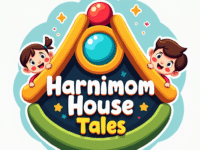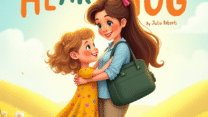
How To Encourage Asking Questions and Curiosity in Toddlers (Gently, Joyfully & Without Overwhelm!)

Raise a little explorer—even if you’re tired, busy, or out of answers.
My Toddler Taught Me Curiosity Isn’t Just Cute—It’s Powerful
I’ll never forget the moment my 2-year-old pointed at a snail and whispered, “What’s in his backpack?” I nearly laughed out loud—but then paused. That wasn’t just a funny moment. That was wonder. That was learning.
As a mom of a curious toddler, I’ve learned that every “why,” every question, every tiny observation is a window into their rapidly growing mind.
Yes, it can be exhausting. Yes, sometimes I don’t have the answer (or the patience).
But encouraging curiosity is one of the greatest gifts we can offer our children.
Here’s how I nurture my toddler’s natural curiosity—without needing a science degree, Pinterest-worthy activities, or endless energy.
Why Is Curiosity So Important for Toddlers?
From ages 1 to 3, toddlers are wired to explore. Curiosity fuels their learning. Every time they ask a question or try something new, they’re:
- Developing critical thinking skills
- Building language and communication
- Strengthening memory and focus
- Learning how to solve problems
The more we encourage questions now, the more confident and capable they’ll be later.
Fun Fact: Studies show that children who ask more questions in early years perform better in school and are more resilient learners!
Step 1: Make Room for Questions (Even the Repetitive Ones)
Let’s be honest—hearing “Why?” 42 times a day can wear you out. But I remind myself: these questions are proof that my child trusts me enough to wonder out loud.
What I say now:
- “That’s an interesting thought!”
- “I don’t know—let’s find out together.”
- “What do you think it could be?”
By keeping the conversation going, even when I don’t have all the answers, I’m showing her it’s okay to ask.
Step 2: Turn Everyday Moments Into Curious Conversations
You don’t need special toys or a packed schedule to raise a curious toddler. You just need to look around.
Here’s what works for us:
- While folding laundry: “How many red shirts can you find?”
- During bath time: “What happens if we pour water through the strainer?”
- On walks: “Why do you think the sky is changing colors?”
Every moment is a learning opportunity—and your toddler is ready to explore it.
Step 3: Use Books That Spark Questions and Wonder
Some of our best conversations have started with bedtime books. When I pick stories that leave space for “what if?” and “why?”, my daughter’s imagination takes off.
Look for books that:
- Have open-ended plots
- Include curious characters
- Encourage kids to solve problems or guess outcomes
On Harnimom.com, we offer a collection of toddler storybooks designed to do exactly that—spark natural conversations while keeping the tone loving and playful.
Bonus tip: After reading, ask, “What do you think would happen next?”
Step 4: Offer Open-Ended Play (and Step Back)
As a mom, it’s tempting to guide playtime. But I’ve learned that some of the best discoveries happen when I step back and let her lead.
Try this:
- Offer materials like blocks, playdough, nature items, safe kitchen tools
- Resist the urge to correct or explain
- Just observe—and join in if invited!
The messier the play, the richer the learning. Curiosity thrives when toddlers feel free to explore on their terms.
Step 5: Ask Your Own Questions Too
I realized my toddler became more curious when she saw me being curious.
Now, I model my own wonder:
- “I wonder where that ant is going?”
- “Why do you think that bird is so loud today?”
- “What do you think would happen if we mixed these colors?”
This tells her it’s normal to ask—even when we’re grown-ups.
Step 6: Celebrate Curiosity—Not Just “Right” Answers
One of the hardest things? Not rushing in with the “correct” answer. I’ve started praising the process instead.
I say things like:
- “You asked such a smart question!”
- “Wow—you noticed something new!”
- “I love how you thought about that.”
The more we validate the effort, the more confident toddlers feel in asking and exploring.
What I Try to Avoid (Even When I’m Tired)
I’ll be honest—I’ve done all of these. But I’m learning to catch myself.
-Saying “That’s a silly question.”
-Rushing through their curiosity with “Because I said so.”
-Shutting down questions when I’m too tired.
Instead, I give myself permission to say,
“That’s such a good question. I’m a little tired now, but let’s talk about it after snack.”
It’s about progress, not perfection.
Real-Life Example: The Mystery of the Rolling Orange
One morning, an orange rolled off the table and bounced under the fridge.
“Where did it go?” my daughter asked.
We got down on our bellies and peeked under together. That simple moment led to a full 15-minute adventure about gravity, fruit, and furniture!
No toys. No prep. Just presence.
That’s the magic of toddler curiosity.
Storybooks That Invite Questions (And Calm the Chaos)
If you’re looking for stories that open up curiosity without overstimulating your little one, check out our gentle, question-inviting toddler books on Harnimom.com.
Each book is designed to:
- Spark imagination
- Prompt child-led dialogue
- Build emotional connection through curiosity
Final Thoughts: Raising a Curious Toddler Is a Gift to the World
Your toddler’s curiosity might test your patience—but it’s also a sign of a brilliant, growing mind.
With a little patience, a few questions, and the right tools, you’re not just answering “Why?” all day—you’re raising a thinker. A dreamer. A problem-solver.
So the next time your little one asks a question that makes you stop and think, smile. You’re doing something beautiful—and so are they.













